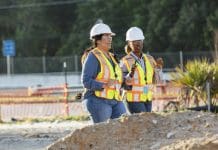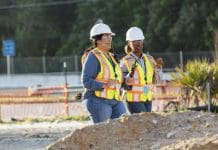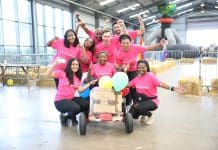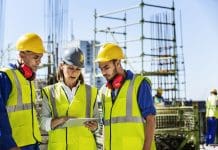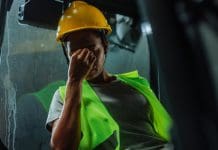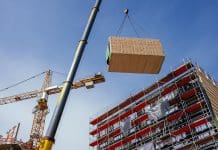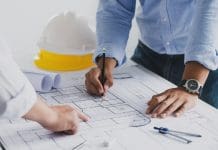Following the shock closure of Women into Construction, Neela Ahmed of E1 asks what next for addressing the barriers to greater diversity and inclusion in construction
Diversity and inclusion have become central themes across industries, but for me, these aren’t just buzzwords or corporate catchphrases – they’re deeply personal. Over the course of my career, I have often found myself working in male-dominated industries, from AdTech to MarTech, and now in construction.
Despite my qualifications and dedication, I’ve experienced moments where my voice wasn’t as valued as much as my male counterparts. These experiences have ignited my passion to create environments where women and other underrepresented groups not only have a seat at the table but also a voice that is heard, respected, and valued.
My journey has taught me the importance of fostering diversity in the workplace, especially in industries like construction, where systemic barriers still hinder progress.
Overcoming barriers to diversity and inclusion in construction
Navigating a male-dominated industry like construction is no easy feat. The World Economic Forum’s 2024 Global Gender Gap Report highlights just how significant the problem remains, estimating that it could take as long as 134 years to close the gender gap globally at the current rate of progress.
In industries like construction, these disparities are especially prominent. Women, along with other underrepresented groups, continue to face barriers that prevent them from rising to senior leadership roles.
These barriers are not just the result of overt discrimination but also stem from deep-seated cultural biases and outdated industry practices.
The challenges that women and minority groups encounter in construction are multi-faceted. It’s not only about breaking through a “glass ceiling” but about facing structural hurdles that limit their professional growth and opportunities.
For example, traditional gender roles are still very much embedded in the fabric of many workplaces, making it difficult for women to gain the same level of respect or access to mentorship and sponsorship opportunities as their male counterparts.
There’s also a lack of understanding within many companies about the unique challenges faced by women and minority groups, which in turn hinders the development of truly inclusive policies.
Drawing inspiration from trailblazers
Throughout my career, I have drawn inspiration from the many trailblazing women who have excelled in male-dominated industries, proving that women can, and do, thrive in environments that have historically been closed off to them.
One such example is Alison Nimmo, whose work in urban regeneration, especially her contributions to the infrastructure of the London 2012 Olympic Games, serves as a powerful reminder of what women can achieve in construction and beyond. Her leadership and achievements have paved the way for future generations of women, showing that it is possible to break through barriers and make lasting contributions in fields once dominated by men.
At E1, we are committed to fostering an environment where women in construction can thrive. One way we are working to achieve this is through our Empowering Women in Construction initiative.
This programme is designed to highlight the achievements of women in the industry, share their stories and build a supportive community. By hosting events, providing a platform for women’s voices, and creating networking opportunities, we aim to inspire the next generation of female leaders in construction.
Building opportunities: Brick by brick
Creating a more diverse and inclusive construction industry requires deliberate, sustained action. It’s not enough to simply acknowledge the issue; companies must implement strategies that actively foster diversity and create opportunities for women and other underrepresented groups.
Below are some key actionable strategies that can help drive this change:
1. Guiding through mentorship and sponsorship
Mentorship is crucial for anyone trying to navigate their career, but it’s especially important for those in underrepresented groups. By establishing targeted mentorship programmes, companies can connect women with experienced industry leaders who can provide guidance, support and opportunities for career advancement.
Sponsorship is equally important. Sponsors actively advocate for their protégés, using their influence to open doors and create opportunities that might otherwise be inaccessible.
2. Fair and inclusive hiring practices
To foster real diversity, hiring practices must be scrutinised and reformed. Companies should commit to impartial hiring by working with agencies that specialise in inclusive recruitment.
Additionally, using diverse hiring panels can help reduce the impact of unconscious bias during the selection process. Implementing blind recruitment processes – where identifying details such as names, genders, and even educational backgrounds are removed from CVs – can also ensure a fairer and more objective selection process.
3. Building a culture of inclusion
Attracting diverse talent is one thing, but retaining that talent is just as crucial. To achieve this, companies must create a culture of inclusion where diversity is not only accepted but celebrated.
This can be achieved by providing regular diversity and inclusion training, including allyship workshops, which empower employees to become effective allies for their colleagues.
Such training should emphasise the importance of addressing and reporting discriminatory behaviour, fostering a workplace culture where inclusivity is actively practised and not just a corporate slogan.
The importance of allyship for diversity and inclusion in construction
An allyship is a powerful tool in the fight for diversity and inclusion, and it’s one that is often overlooked. In August, Women in Construction (WIC) shut its doors after 16 years of driving positive change within the construction industry.
Throughout its tenure, WIC supported over 4,700 women, helping them to enter and succeed in the construction field. This organisation provided invaluable support, training and opportunities for women, but its closure highlights the ongoing need for systemic change.
Men in the industry play a crucial role as allies. By mentoring and sponsoring female colleagues, participating in diversity and inclusion training, and challenging discriminatory practices, men can help create a more balanced and equitable industry. Often, the impact of male allies is underestimated, but their active support can make a significant difference in achieving real, lasting inclusion.
Diversity and inclusion in practice
At E1, inclusivity and equity are at the heart of our operations. Our leadership team embodies this commitment with a balanced, 50/50 gender split. We believe that driving change in the construction industry requires a top-down approach, where inclusivity is woven into every aspect of the business, from hiring practices to daily operations.
Our goal is to create a more inclusive and equitable environment for everyone, regardless of gender or background.
While the journey toward a fully inclusive construction industry is far from over, every step we take brings us closer to that goal. By implementing inclusive practices, advocating for diversity and fostering allyship, we can all do our part to shape a better, more equitable future for the construction industry.
The path forward requires continuous effort, but the rewards – a more diverse, innovative and prosperous industry – are well worth the challenge.




